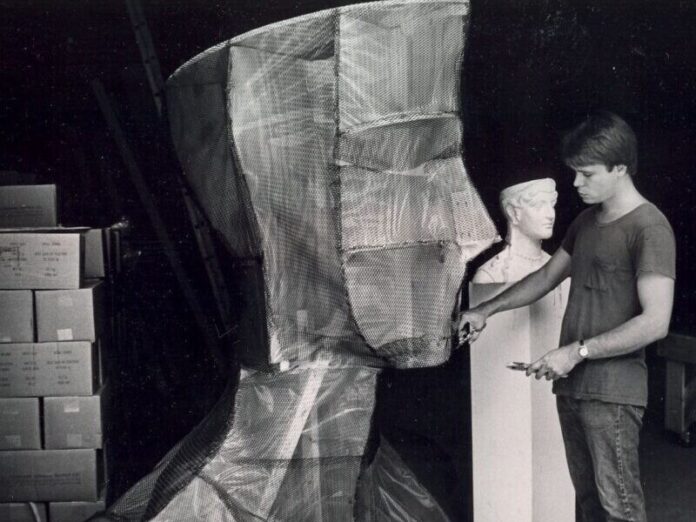The Parthenon and Centennial Park Conservancy announced “The Role of a Replica,” a hands-on, interactive exhibition exploring the ways historical and artistic replicas can illuminate our lost history and how they are currently used to illustrate the latest archeological theories and discoveries.
The exhibition will be on display in the West Gallery of the Parthenon from July 14 through Dec. 31. A free gallery opening will take place on July 13 at the Parthenon from 6-8 p.m.
Organized by the Parthenon’s curator Jennifer Richardson and Parthenon staff, the exhibit will feature hands-on displays and activities to let amateur archeologists explore replicas related to the ancient Parthenon and how ongoing work continues to uncover new information about colors, structures, and more.
“The Nashville Parthenon was a grand endeavor to illustrate the city’s artistic, educational, and cultural ideals,” said Parthenon curator Jennifer Richardson. “When the building was reconstructed to be a permanent icon of the city, Nashville also committed to creating a full-scale replica of the ancient temple’s interior. This devotion to scholarship and accuracy has created an opportunity for people to experience the pinnacle of Greek architecture in a way that is no longer possible, even in Athens, Greece. This exhibit celebrates the replicas in our collection while creating a sense of discovery for visitors of all ages. Our team has been working with specialists to create interactive ways to explore how replicas make an original artwork more accessible, test theories, and convey ideas. History buffs and archaeology enthusiasts should be especially excited about some truly mind-blowing discoveries that will be published later this year in scholarly journals but will debut in ‘The Role of a Replica.’”
The exhibition includes three main interactive displays:
What Are Molds and Casts? This interactive game helps visitors understand the complex process of making molds and casts, like those used to make the Parthenon Marbles and Nashville Parthenon pediments.
Activity: Visitors arrange the sequence of mold and cast making to reveal one of the actual molds used to create the Nashville Parthenon pediments.
How Do You Recreate a Lost Artwork? This activity engages visitors in learning how the Nashville Parthenon Pediments were made using casts of the Parthenon Marbles, while also showing how designs for the pediments are still being revised.
Activity: Visitors take puzzle pieces of the casts and place them within the pediment maquette designed in 1923. When puzzle pieces are put in the correct spot, a panel depicting the 2022 full-color design by Flyover Zone is revealed.
How Is Science Revealing Ancient Details? With this activity, visitors learn about how technology can reveal colors that are invisible to the human eye and about methods used to study ancient art and architecture.
Activity: A cast of the Parthenon Frieze is encased within a custom scanner. Visitors can scan it with raking light, UV light, or with a metal detector.
These interactive displays will teach museumgoers how molds and casts of pieces of ancient statuary can be used to reconstruct larger works and friezes; how modern imaging and light technology can reveal lost colors and pigments on ancient statuary; and how plaster casts, archival sketches and materials, and other resources and technologies can help researchers reconstruct fragmented sculptures.
The exhibition also explores how artists and historians worked together to recreate the Parthenon’s central figure, the 42-foot statue of Athena Parthenos, and includes segments from a documentary currently being made about the casts and models at the Nashville Parthenon and at Acropolis Reborn. QR codes will be embedded within the exhibit, inviting visitors to learn more.
Replicas on display throughout the exhibition include the Nashville Parthenon, the statue of Athena Parthenos and a maquette of the statue, Athena Parthenos’ earflap with gold leaf, casts of Parthenon marbles, the Laborde head cast, and a model crane.
In conjunction with the exhibition, Panagiotis Kotsanas of the Kotsanas Museum of Ancient Greek Technology will conduct a virtual symposium on July 19 at 11 a.m. via Zoom. Kotsanas will share information about replicas of ancient Greek technologies and how his museum in Greece uses replicas to help visitors learn about ancient technologies, innovations, and more. The symposium is underwritten in part by Humanities Tennessee, Amazon, the Sandra Schatten Foundation, HCA Healthcare Foundation, Tennessee Arts Commission, Hays Foundation, and Advance Financial Foundation.
Art exhibitions at the Parthenon are underwritten by the Centennial Park Conservancy and its generous supporters. For more information, please visit conservancyonline.com.
PARTHENON HOURS & ADMISSION
The Parthenon is open Monday through Thursday from 9 a.m. to 7 p.m., Friday and Saturday from 9 a.m. to 4:30 p.m., and Sunday from 12:30 to 4:30 p.m. Admission to the Parthenon is $10 for adults; $8 for seniors 62 and over; and $8 for children 4 to 17. Children under 4 are admitted free. Centennial Park Conservancy members receive free museum admission.



















